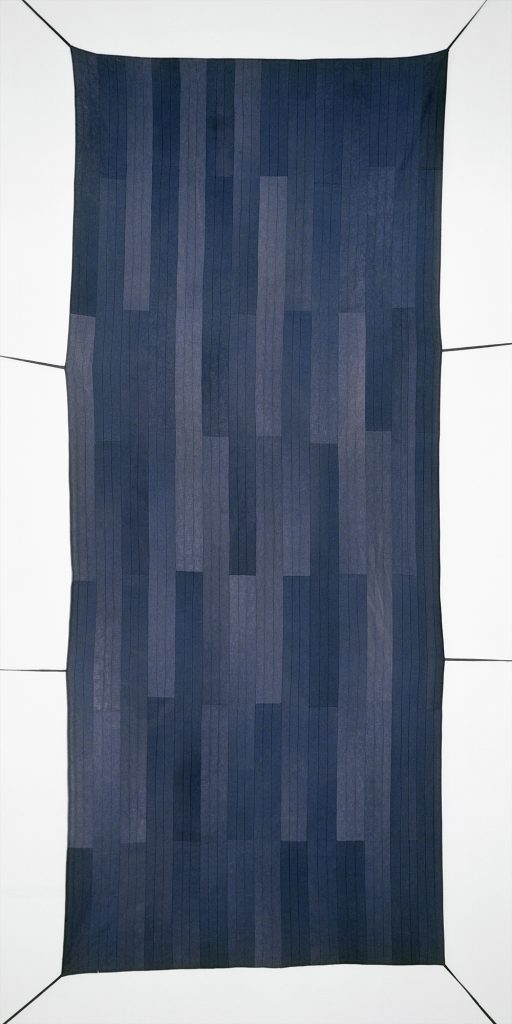
The floor, 2021, Pigment print, 203x102cm
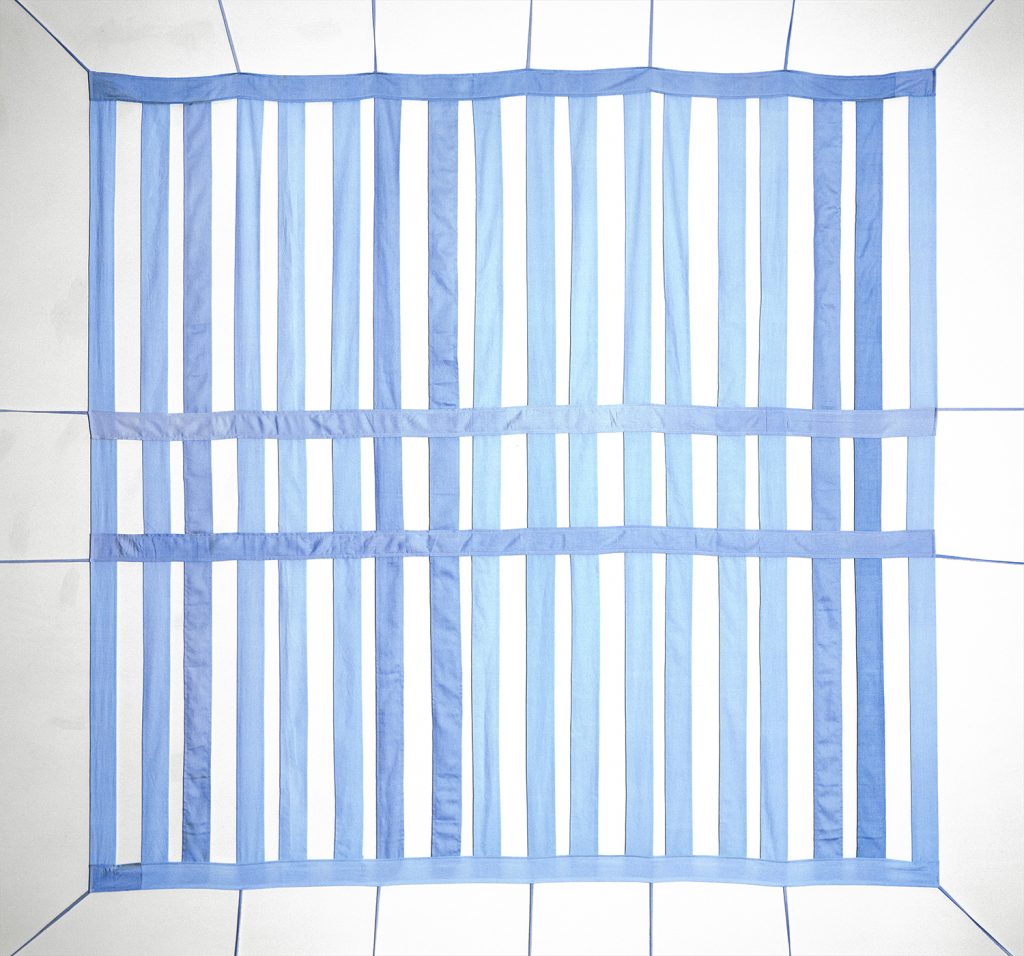
The Partition, 2021, Pigment print, 142x152cm

The Window, 2021, Pigment print, 105,5×81,5cm
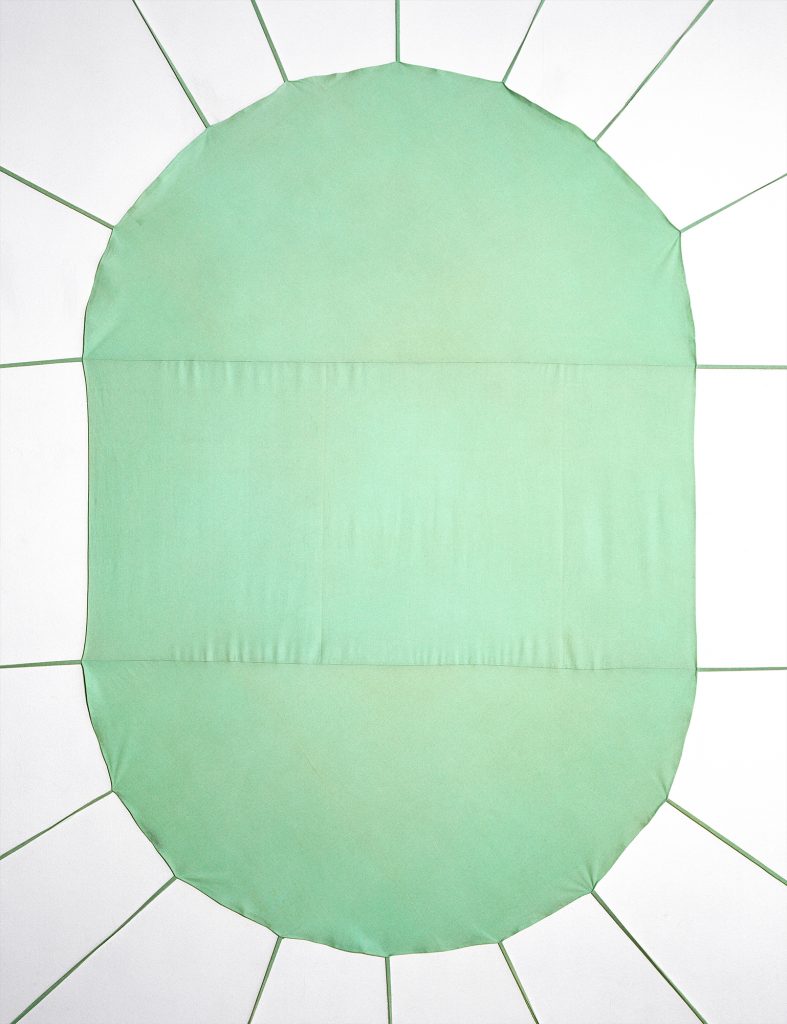
The Table, 2021, Pigment print, 105,5×81,5cm
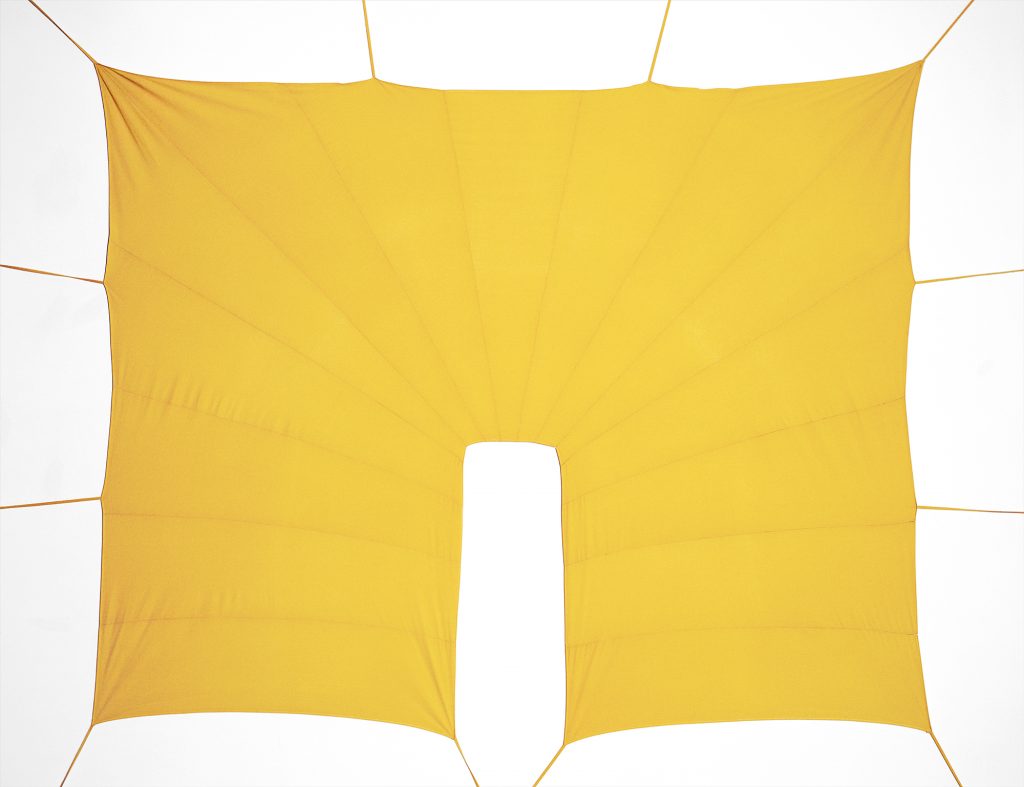
The Stairs, 2021, Pigment print, 132x102cm
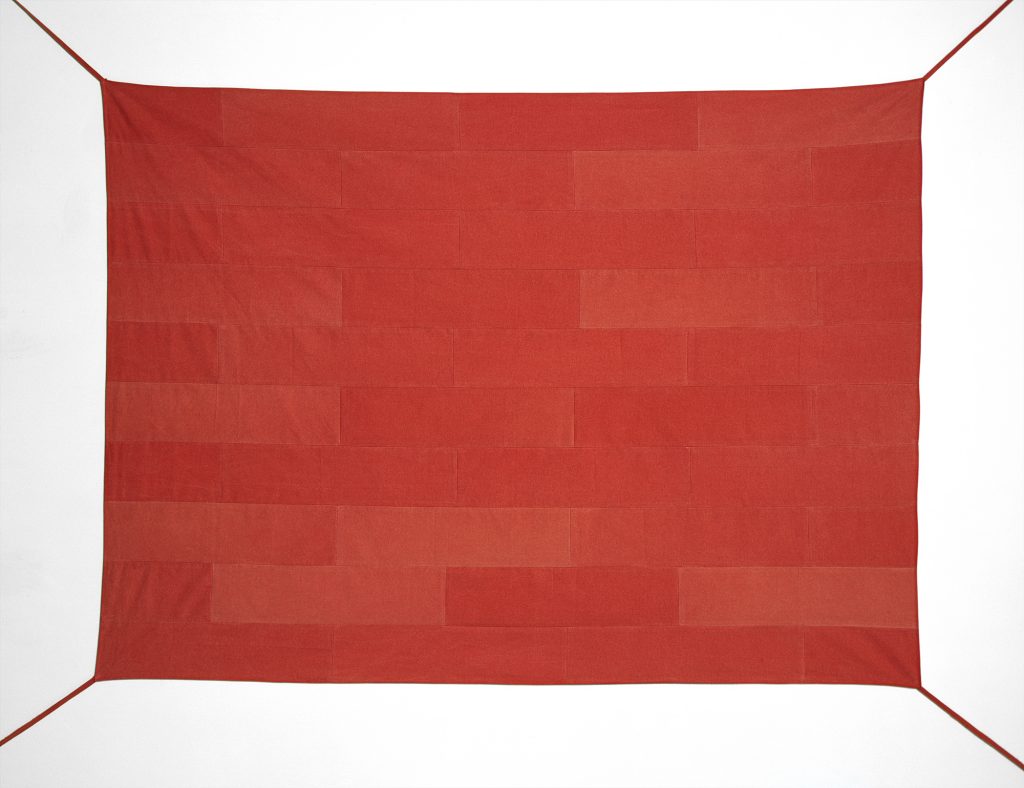
The Ceiling, 2021, pigment print, 81,5×105,5cm

20 windows, 2021, wallpaper photography installation 317x531cm

The Bedframe, 2022, Pigment print, 115x102cm.
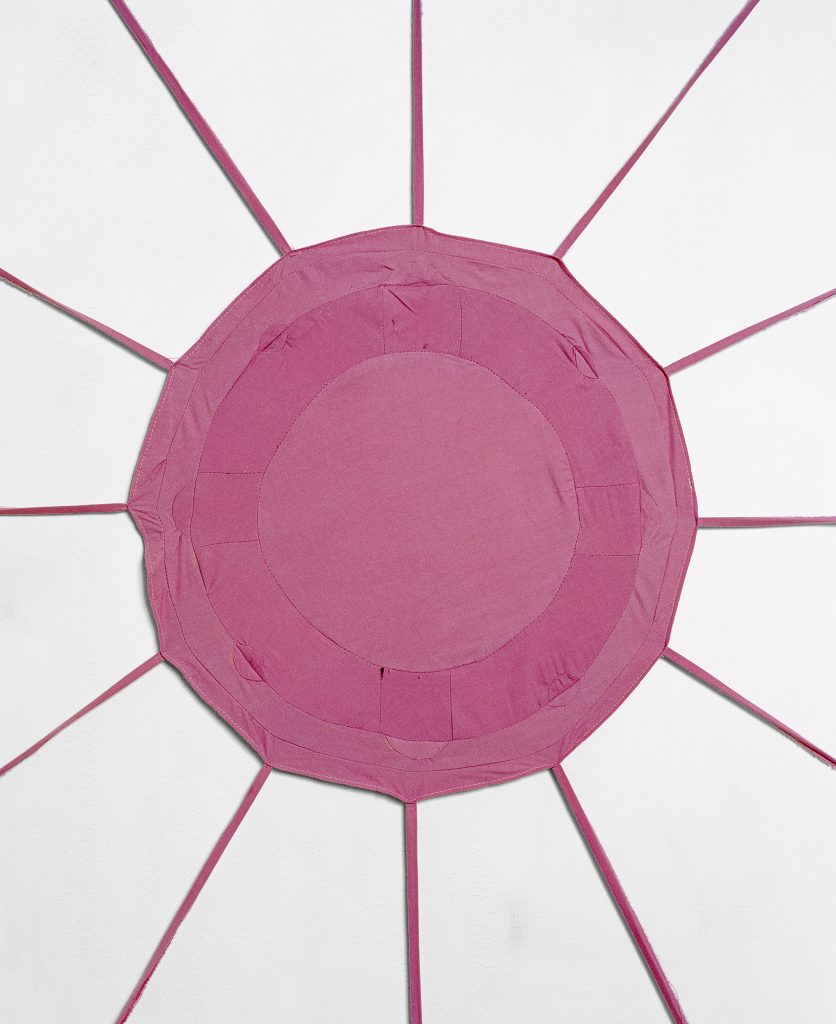
The Ashtray, 2022, Pigment print, 50×41,5cm.
Linda Hofvander’s new colour photographs show textiles in various shapes, stretched flat and pinned against a white wall. Each image is almost filled by a slightly worn, brightly coloured, but faded cloth with a 70’s or early 80’s feel: yellow, red, pink, green, blue and a light baby blue. Each cloth is made up of smaller parts from a larger piece, perhaps a sheet or a curtain, that have been stitched together to form distinct, geometric shapes. The sharp photographs are taken from a straight angle and in spite of the flatness of the motif, the tactile textures of the textiles are present in a sensuous way.
Textiles are often associated with the personal, even intimate; clothes that we wear, sheet we sleep in, the sphere of the home. To stitch together pieces of cloth is a creative act but this doesn’t have to mean creating something entirely new. It can sometime involve mending something broken or torn. Sewing has an aspect of care. And this caring can also be reciprocal. It can have a therapeutic quality to the one sewing, mending, not least by the time and concentration invested in the act.
When her mother passed away, Linda Hofvander bought her childhood home. The artist says she felt a bond to the place; beautifully located with a view over a lake, but not necessarily to the house. She planned an extensive renovation of the building that would practically mean demolishing most of it. Once the work was under way, she grew a wish to keep something from it. But instead of simply photographically documenting the disappearing home, she decided on a more complicated, time-consuming and physical method; sewing patch-work images of some parts of the home, that the titles of the photographs identify: the stairs, the floor, the partition, the table, the ceiling, the window. The scale is different, but the proportions are correct and the smaller parts that make up the motive also represent details; like the strips of cloth representing the venetian blinds of the window. The photographs are complemented by two other works: at the end of the gallery the wall is covered by a wallpaper printed with a grid-like drawing in charcoal, the grid representing all the windows of the house. In the centre of the gallery there is a group of freestanding board sculptures representing the doors of the house in actual scale. Translated to other materials and media, they are rather abstract but also possible entries into the house.
But why photograph the textiles and not just show them as they are? Perhaps because photography is so connected with the freezing of a moment, with memory and disappearance. Or perhaps simply because photography is Linda Hofvander’s media. Where she feels at home.
Magnus af Petersens 2021
Installation images from exhibitions:



